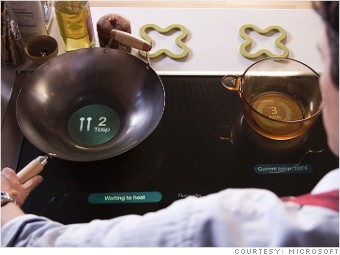

Flying cars were always a pie-in-the-sky proposition, but hologram calls and many other bold tech ideas have hit snags.

The hope: Sensors, wireless connections and special routers can create a Jetsons-esque connected home. Your fridge and cabinet will "talk" to each other and let you know that if you pick up some chocolate, you'll have all of the ingredients for a killer devil's food cake.
The reality: The components necessary for a connected home are finally cheap enough to make this a reality. AT&T (T) and Sony (SNE) have already shown off lots of cool home-control technology -- but each company's platform is incompatible with the others.
What's the deal? Each connected-home system works differently, and the platforms don't talk to each other. So consumers either have to stick to one platform, or shell out for extra equipment to bridge the gap. That severely limits consumer choice.
Still, connected-home demos are finally catching up to the Jetsons fantasy. AT&T's home security platform, expected to roll out nationwide this year, lets customers control door locks, lights, ovens, and thermostats using a smartphone or tablet. Intel (INTC) has a similar experimental platform that links household gadgets through machine-to-machine connections.
Mainstream adoption is likely still a few years away though. Earlier this month, Microsoft posted a connected-home "conceptual" video of technology the company says could be 5-10 years down the road.